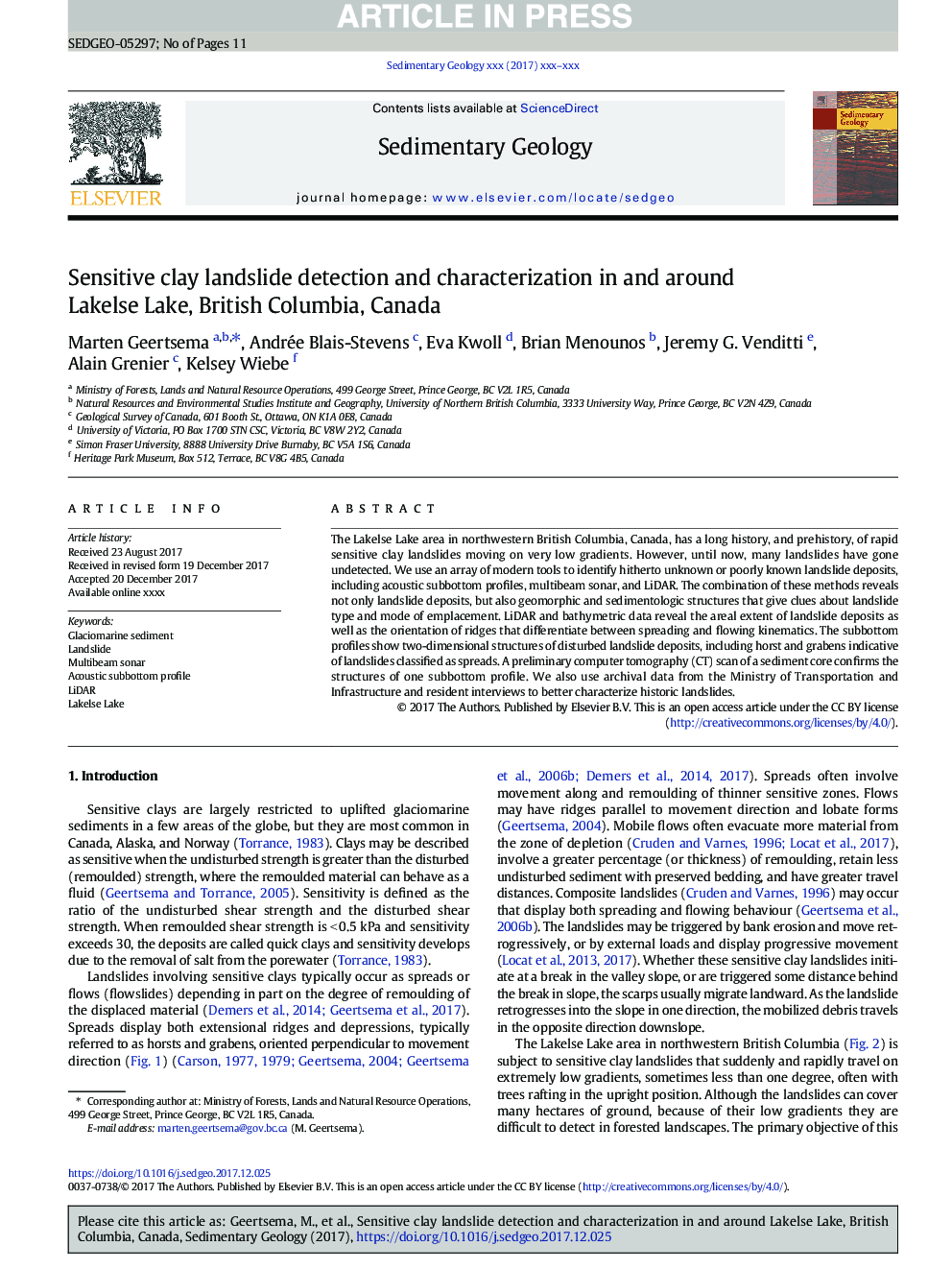| Article ID | Journal | Published Year | Pages | File Type |
|---|---|---|---|---|
| 8908554 | Sedimentary Geology | 2018 | 11 Pages |
Abstract
The Lakelse Lake area in northwestern British Columbia, Canada, has a long history, and prehistory, of rapid sensitive clay landslides moving on very low gradients. However, until now, many landslides have gone undetected. We use an array of modern tools to identify hitherto unknown or poorly known landslide deposits, including acoustic subbottom profiles, multibeam sonar, and LiDAR. The combination of these methods reveals not only landslide deposits, but also geomorphic and sedimentologic structures that give clues about landslide type and mode of emplacement. LiDAR and bathymetric data reveal the areal extent of landslide deposits as well as the orientation of ridges that differentiate between spreading and flowing kinematics. The subbottom profiles show two-dimensional structures of disturbed landslide deposits, including horst and grabens indicative of landslides classified as spreads. A preliminary computer tomography (CT) scan of a sediment core confirms the structures of one subbottom profile. We also use archival data from the Ministry of Transportation and Infrastructure and resident interviews to better characterize historic landslides.
Keywords
Related Topics
Physical Sciences and Engineering
Earth and Planetary Sciences
Earth-Surface Processes
Authors
Marten Geertsema, Andrée Blais-Stevens, Eva Kwoll, Brian Menounos, Jeremy G. Venditti, Alain Grenier, Kelsey Wiebe,
